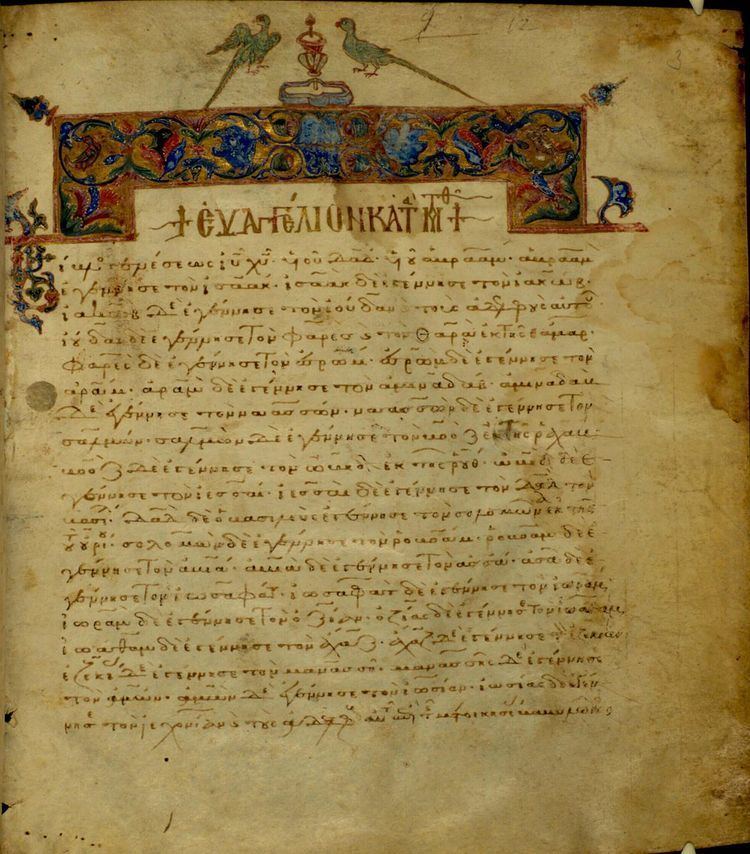Date 12th century Type Byzantine text-type | Size 22.5 cm by 19 cm | |
 | ||
Text New Testament (except Rev.) | ||
Minuscule 57 (in the Gregory-Aland numbering), δ 255 (Von Soden), is a Greek minuscule manuscript of the New Testament, on parchment leaves. Palaeographically it has been assigned to the 12th century. The manuscript is lacunose. It has marginalia.
Contents
Description
The codex contains entire of the New Testament except the Book of Revelation on 291 parchment leaves (size 22.5 cm by 19 cm), with two lacunae (Mark 1:1-11 and at the end). The leaves are arranged in quarto (four leaves in quire). The text is written in one column per page, 25 lines per page. Psalms and Hymns follow Epistles. The initial letters and headpieces are illuminated. It has accents and breathings, the nomina sacra are written in and abbreviated way. It is written in small beautiful letters with an abbreviations. The initial letters in gold.
It contains lists of the κεφαλαια (tables of contents) before the Gospels of Matthew, Luke, and John. The text is divided according to the κεφαλαια (chapters), whose numbers are given at the margin, and their τιτλοι (titles) at the top of the pages. It contains lectionary markings at the margin in red (for liturgical use), but added by a later hand).
The order of books: Gospels, Acts, Catholic epistles, Pauline epistles, Psalms, and Hymns.
Text
The Greek text of the codex is a representative of the Byzantine text-type. Aland placed it in Category V.
It was not examined by using the Claremont Profile Method.
History
The manuscript was written in Constantinople, in the 3rd quarter of the 12th century, with additions up to the end of the 14th century including a note relating to Epeiros.
Walton used it for a Polyglot (as Magd. 1). Henry Hammond collated the manuscript twice. It was also examined by Wettstein (in 1715), Orlando T. Dobbin (for John Mill), and C. R. Gregory (in 1883).
It is currently housed in at the Magdalen College (Gr. 9), at Oxford.
